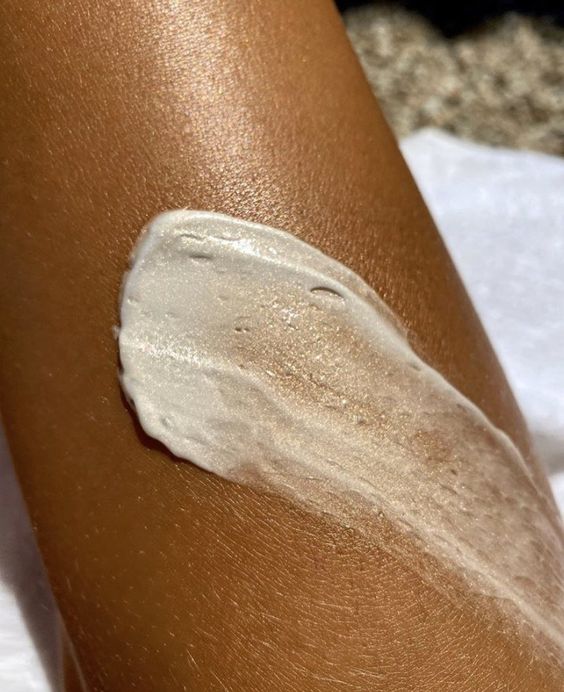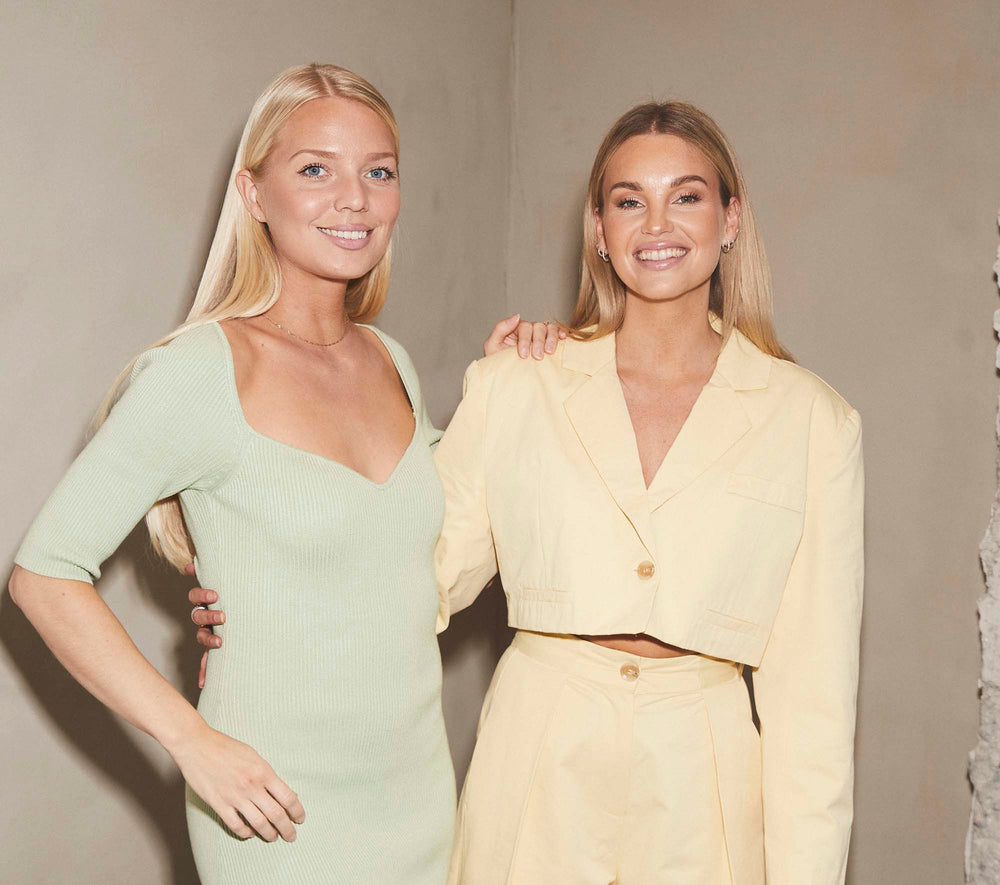Why do you really need to use sunscreen and which type of sunscreen is best? Do you need to use sunscreen all year round and how do you avoid hormone-disrupting substances in sunscreen? We clarify the most common questions about sun protection and summarize the tips for ultimate protection.
Why should we protect ourselves from the sun?
Sun protection's main task is to protect the skin against aging and changes that can cause various types of skin cancer . Today we know that there is a clear correlation between high sun exposure and skin cancer. The sun is also the absolute biggest cause of skin aging in the form of wrinkles, sagging skin, pigment spots and uneven skin tone. More specifically, it is the radiation itself, UVA and UVB radiation, from the sun that is the culprit and that we need to protect ourselves against.
When do you need to protect yourself from the sun?
To know when and if we need to protect ourselves from the sun, we can use a so-called UV index. This is a measure to be able to determine how harmful the UV radiation from the sun is. The UV index can vary from 0 to 12 depending on where on earth we are and what season it is. Weather and the thickness of the ozone layer also play a role ¹ . On a sunny December day in Thailand, the UV index is 12. In Sweden, the UV index is usually between 0-8. From November to February, the UV index in Sweden is below 2, and on a gray cloudy day in December, the UV index can be 0. During the winter months in Sweden, it is therefore unnecessary to use sunscreen. An exception is if you are in a snowy landscape on a sunny day when the sun is reflected in the snow and the UV radiation can be doubled. From March to October, when the UV index increases in Sweden, the importance of protecting yourself from the sun increases.
We should therefore use sunscreen:
- During the summer months (March-October) in Sweden
- In winter if there is both snow and sun, for example on a skiing holiday
- On holiday in the sun all year round
What is the difference between UVA and UVB radiation and why do we need protection from both?
When we talk about protecting ourselves from the sun's radiation, there are two different types of radiation that can cause damage to the skin. These are called UVA and UVB radiation.
UVA radiation
UVA penetrates deeper into the skin, to the dermis, and is the radiation that we are exposed to most via the sun. Being exposed to UVA is what makes the pigment in the skin dark and can also cause wrinkles and cancer, mainly skin cancer. The radiation from solariums also consists mostly of UVA radiation - often an even higher proportion than from the sun's rays ².
UVB radiation
The amount of UBV radiation is more limited as the ozone layer filters out a large proportion before it reaches the earth's surface. UVB also does not penetrate as deeply into the skin, but to the epidermis, which is the outermost skin layer. It is UVB that causes us to burn and can cause pigmentation and is also a contributing factor to wrinkles and cancer².
For those reasons, we need both UVA and UVB in our sunscreen.
Physical and chemical UV filters that protect
In today's sun protection, there are two different UV filters that protect against UVA and UVB rays. These are called physical filters (also known as mineral filters/inorganic filters) and chemical filters (also called organic filters). For total protection, we should use a sunscreen that has a combination of these two.
Physical UV filtersPhysical filters lay like a film on the skin and reflect both the sun's rays, UVA and UVB rays. These filters can often form a white film on the skin. Physical filters are often based on zinc oxide and titanium dioxide ³ .
Chemical UV filtersChemical filters instead absorb the UV rays to protect the skin. Some absorb more of UVA and others more of UVB ³ .
Can sunscreen be endocrine disrupting?
Many people may be afraid of chemical filters as certain types have been shown to have harmful and hormone-disrupting effects. This occurs in many chemical sunscreens sold today as these substances have not yet been banned. One such example is those containing oxybenzone (also called benzophenone-3), which consists of molecules so small that they can penetrate the skin and have been found in breast milk and urine ⁴ .
This is not to say that all chemical filters are bad, but we should be vigilant about the ingredient list on sunscreens with chemical filters. It is best to choose a sunscreen that is a combination of chemical and physical filters. The combination of these two allows for a product with a very high protection, SPF 50+, with good UVA and UVB protection and that does not leave a white film when applied.
What should you choose for SPF?
SPF (Sunburn Protection Factor) is a way of measuring the percentage of UV radiation that is let through and reaches the skin. The lower the SPF of a sunscreen, the more radiation reaches the skin, the higher the SPF, the less radiation reaches the skin ⁵ . It is usually assumed that the SPF number provides that number of times more protection than if you were completely without sun protection 6 .
Here is an example:
- SPF15 provides 15 times more protection than if you were without it
- SPF30 provides 30 times more protection than if you were without it
- SPF50 provides 50 times more protection than if you were without it
It is best to choose SPF50+ to get the best possible protection. Keep in mind that no sunscreen blocks the sun completely from the skin.
Does the melanin in the skin work as sun protection?
Melanin is a substance in our body that produces pigment in our hair, skin and eyes. The more melanin you have, the darker your skin, hair and eye color. Melanin is often referred to in connection with the sun as it absorbs the sun's rays and protects your cells. If you have a lot of melanin and a darker skin tone, you have better natural protection against the sun. The more time you spend in the sun, the more melanin is produced as well. A common misconception is that people with dark skin do not need to protect themselves from the sun because they have so much melanin. This is not true as melanin does not provide full protection and you can still be damaged by the sun's rays and develop cancer ⁷.
Sun protection summary tips:
- Use sunscreen during the summer months in Sweden
In Sweden, we have low UV radiation during the winter, but during the summer and when you are skiing or in a sunny snow environment, the UV levels are higher and more harmful.
- Avoid the sun when it is at its strongest
Regardless of where you are, the sun and its UV rays will be at their strongest in the middle of the day between approximately 11.00-15.00 8 . Therefore, avoid being exposed to direct sunlight during this time of the summer in Sweden or in warmer countries all year round.
- Always avoid burning yourself
When we burn, it triggers oxidative stress, which damages the cells and causes early aging of the skin 9 . There is also a strong link between frequent sunburn and malignant melanoma, which is the most dangerous form of skin cancer (10).
- Choose a sunscreen with a combination of chemical and physical filters
To get adequate protection, a tip is to use an SPF with a combination of chemical and physical filters. Today, there are newly developed sunscreens with molecules that cannot penetrate the skin.
– Choose SPF50+
SPF50 means 50 times more protection (against UVB, but less for UVA) than going without at all – but no sunscreen has a total block.
– Use complementary sun protection
As a complement to sun protection, it is good to use a hat, sunglasses and clothing that covers. For example, a cotton shirt has about SPF50 while a cotton t-shirt has about SPF10. The thicker or sturdier a fabric is, the higher the SPF it has. A garment that fits loosely also protects better than one that fits tightly.
- Lubricate yourself several times a day
If you sunbathe, swim or sweat, you should ideally apply about every two hours to have full protection throughout the day.
- Only use sunscreen during the months you are exposed to sunlight
UV protection's only good effect is to protect against the sun, therefore we should avoid having UV protection when we are not in the sun and during the winter months in Sweden.
Also remember that the lighter your skin, the less natural sun protection you have in your melanin. Last but not least – the sun also has positive effects on us humans. It contributes, for example, to our vitamin D production and our feel-good hormone serotonin.
Which sunscreen without hormone-disrupting substances do we use ourselves?
We often get questions about which sun protection we ourselves use and recommend. Below is in sponsored collaboration with Skinome with associated ad links. We have a collaboration with Skinome as we think they make fantastic products that are at the forefront and are designed based on new research. In the spring of 2023, they have released a new and unique type of sunscreen based on new research. Their sunscreens Sun Emulsion and Sun Emulsion Body contain a combination of both physical and chemical filters without hormone-disrupting substances with SPF50+. In addition, for the face, it has a fantastic texture that works well to apply under make-up without it being sticky or the make-up "slipping off".
They are also perfume-free, which we appreciate as perfume can often contain quantities of substances that do not have to be reported on the label. It also means that we don't have to smell strongly of sunscreen all summer. Feel free to listen to our podcast episode about sun protection with skin researcher Johanna Gillbro, who is also the founder of Skinome.
References
-
The Radiation Safety Authority, 2021. UV index [Online].
https://www.stralsakerhetsmyndigheten.se/omraden/sol-och-solarier/om-uv-stralning/uv-index/ -
The Radiation Safety Authority, 2017. About UV radiation [Online].
https://www.stralsakerhetsmyndigheten.se/omraden/sol-och-solarier/om-uv-stralning/ -
Sander M, Sander M, Burbidge T, Beecker J. The efficacy and safety of sunscreen use for the prevention of skin cancer. CMAJ. 2020 Dec 14;192(50):E1802-E1808. doi: 10.1503/cmaj.201085. PMID: 33318091; PMCID: PMC7759112.
https://www.ncbi.nlm.nih.gov/pmc/articles/PMC7759112/ -
Schlumpf M, Kypke K, Wittassek M, Angerer J, Mascher H, Mascher D, Vökt C, Birchler M, Lichtensteiger W. Exposure patterns of UV filters, fragrances, parabens, phthalates, organochlor pesticides, PBDEs, and PCBs in human milk: correlation of UV filters with use of cosmetics. Chemosphere. 2010 Nov;81(10):1171-83. doi: 10.1016/j.chemosphere.2010.09.079. Epub 2010 Oct 27. PMID: 21030064.
https://pubmed.ncbi.nlm.nih.gov/21030064/ -
The Radiation Safety Authority, 2021. Clothing as sun protection [Online].
https://www.stralsakerhetsmyndigheten.se/omraden/sol-och-solarier/rad-och-recommendation/klader-som-solskydd/ -
Skin Cancer Organization, 2020. Ask the expert: Does a high SPF protect my skin better? [On-line]
https://www.skincancer.org/blog/ask-the-expert-does-a-high-spf-protect-my-skin-better/ - Maddodi N, Jayanthy A, Setaluri V, 2012. Shining light on skin pigmentation: the darker and the brighter side of effects of UV radiation . ( https://pubmed.ncbi.nlm.nih.gov/22404235/ )
- The Radiation Safety Authority, 2020. Advice and recommendations [Online].
https://www.stralsakerhetsmyndigheten.se/omraden/sol-och-solarier/rad-och-recommendation/ - S. Albrecht, S. Jung, R. Müller, J. Lademann, T. Zuberbier, L. Zastrow, C. Reble, I. Beckers, MC Meinke, Skin type differences in sun‐induced oxidative stress, British Journal of Dermatology , Volume 180, Issue 3, 1 March 2019, Page e71,
https://doi.org/10.1111/bjd.17543 - Dudi Wasito, PhD, 2013. Malignant Melanoma [Online]
https://cancer.se/malignt-melanom/

